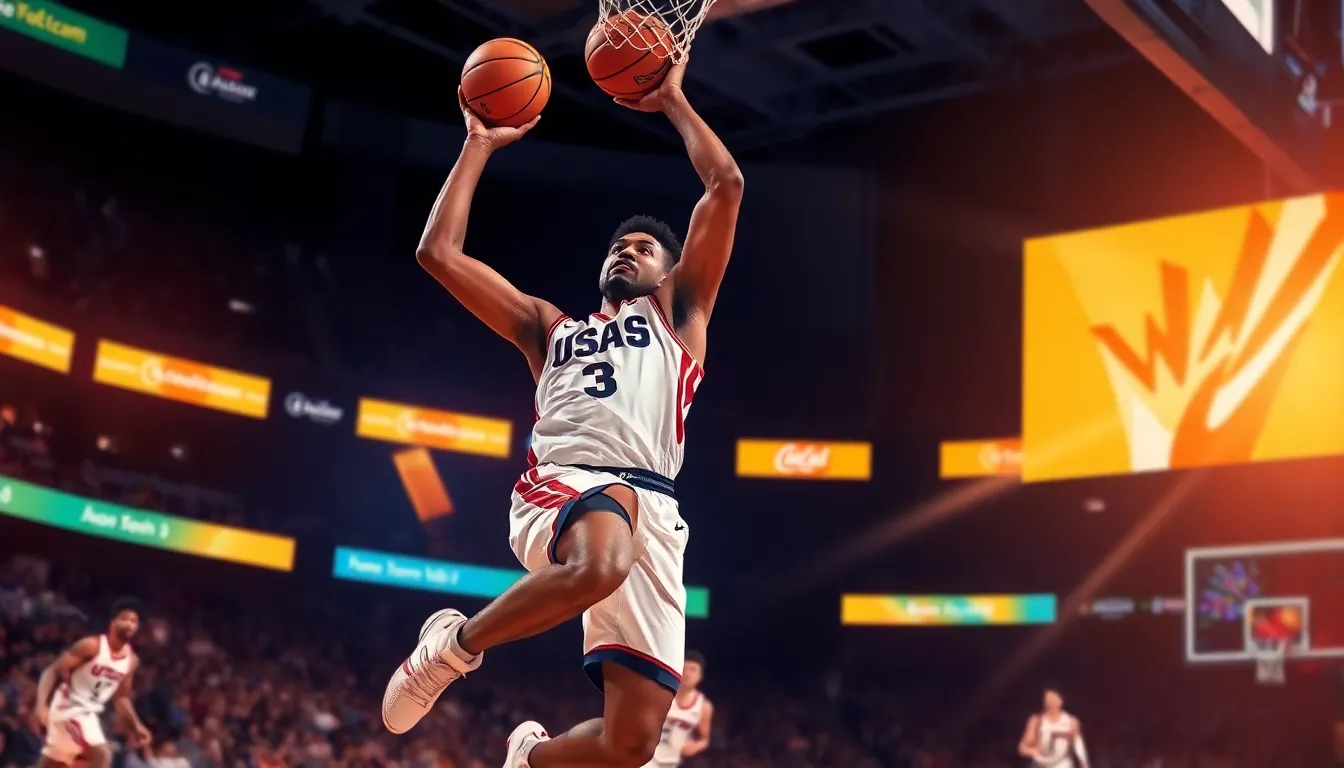Phone:
(701)814-6992
Physical address:
6296 Donnelly Plaza
Ratkeville, Bahamas.

In the world of basketball, the term “RPG” might conjure images of epic video game battles rather than the hardwood hustle. But fear not, it’s not about slaying dragons or leveling up your character. RPG stands for “rebounds per game,” a statistic that reveals how well a player snags that elusive orange ball off the glass.
RPG, or rebounds per game, serves as a crucial statistic in basketball. This metric evaluates a player’s effectiveness in collecting rebounds during games.
RPG stands for rebounds per game, quantifying the average number of rebounds a player secures in a game. Rebounds encompass both offensive and defensive plays, showcasing a player’s skill in positioning and timing. Calculating RPG involves dividing total rebounds by the number of games played. This statistic plays an essential role in assessing a player’s impact on the court.
RPG holds significant value in basketball statistics as it reflects a player’s overall contribution to a team’s performance. Tracking RPG can highlight a player’s rebounding prowess, influencing game strategy. Higher RPG numbers often correlate with better defensive and offensive opportunities. In addition, teams depend on players with strong RPG to gain possession and create scoring chances. Evaluating RPG alongside other metrics provides insights into a player’s efficiency and effectiveness on the court.

RPG reflects a player’s performance in securing rebounds during games. This statistic plays a vital role in assessing a player’s overall effectiveness on the court.
Rebounds contribute significantly to RPG calculations. Total rebounds, including offensive and defensive, determine a player’s effectiveness in this area. Offensive rebounds lead to second-chance points, while defensive rebounds help end opponents’ possession. Impactful players often excel in both types, enhancing their RPG. Players known for their rebounding skills frequently appear in higher RPG rankings, showcasing their value to teams. Evaluating specific games shows how individual contributions in rebounds can shift overall performance metrics. Additional analyses may include comparing a player’s RPG to their peers, which emphasizes their rebounding capabilities more clearly.
Game context influences RPG calculations heavily. Factors such as pace of play, opposing teams’ strategies, and team composition contribute to variations in rebounds. Fast-paced games generally yield more rebound opportunities, boosting RPG figures. Similarly, opponents with poor rebounding stats may allow players to increase their RPG. Situational factors like matchups and player injuries can also affect performance. When assessing RPG, it’s essential to consider these contextual elements as they provide a clearer picture of a player’s rebounding effectiveness in different scenarios. Analyzing performance in various contexts helps identify trends and patterns pertinent to rebounding opportunities.
RPG trends have evolved significantly over the years in the NBA. Analyzing player performance data reveals shifts that reflect changing styles of play.
Player performance metrics show a notable increase in RPG among elite rebounders over the past two decades. Athletes such as Dwight Howard and Andre Drummond have consistently demonstrated high RPG numbers, underscoring their dominance in rebounding. Taller players boast advantages in securing positions for rebounds. Meanwhile, a growing emphasis on athleticism and training has led to more players enhancing their rebounding skills. Teams recognize the value of these statistics in maximizing game strategies. Enhanced conditioning and skill development result in players achieving higher rebound averages, ultimately changing how they contribute to their teams.
Strategy adjustments significantly impact RPG numbers in contemporary basketball. The rise of small-ball lineups emphasizes speed and agility, affecting traditional rebounding roles. Teams spot a shift toward prioritizing perimeter shooting, consequently altering rebounding dynamics. Emphasizing defensive rebounds becomes critical for maintaining team possession in fast-paced games. Coaches strategize around utilizing offensive rebounds to create second-chance scoring opportunities. Awareness of these evolving strategies provides insight into how teams can leverage RPG for competitive advantage.
RPG serves as a pivotal metric for assessing player performance in the NBA. Understanding this statistic enhances evaluations of athletes on the court.
Comparisons among players often utilize RPG to gauge rebounding prowess. Players with higher RPG consistently demonstrate better rebounding skills. For instance, elite rebounders like Andre Drummond average 15 RPG, while others may fall significantly lower. Not only does this statistic provide insights into individual contributions, but it also reflects their impact on team success. By analyzing RPG alongside other metrics, teams can make informed decisions about player effectiveness and fit within their roster.
Draft strategies frequently incorporate RPG to identify promising talent. Players with standout rebounding statistics signal strong potential to contribute immediately to a team’s rebounding success. Teams evaluate RPG numbers to predict future performance and gauge a player’s readiness for the NBA. Additionally, focusing on RPG can uncover hidden gems who may excel in rebounding despite other stats appearing average. This approach ensures teams prioritize impactful players essential for achieving their strategic objectives.
RPG is more than just a statistic; it’s a vital indicator of a player’s impact on the game. By understanding rebounds per game, fans and analysts can appreciate how rebounding ability influences team dynamics and strategies. As the NBA evolves, the significance of RPG continues to grow, shaping how teams construct their rosters and approach games.
Players with high RPG not only enhance their own value but also contribute significantly to their team’s success. Recognizing the importance of rebounding in both offensive and defensive scenarios can lead to smarter game strategies. As the landscape of basketball changes, keeping an eye on RPG will remain essential for evaluating player performance and team effectiveness.